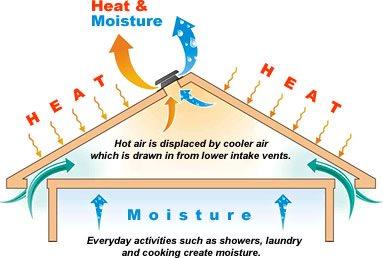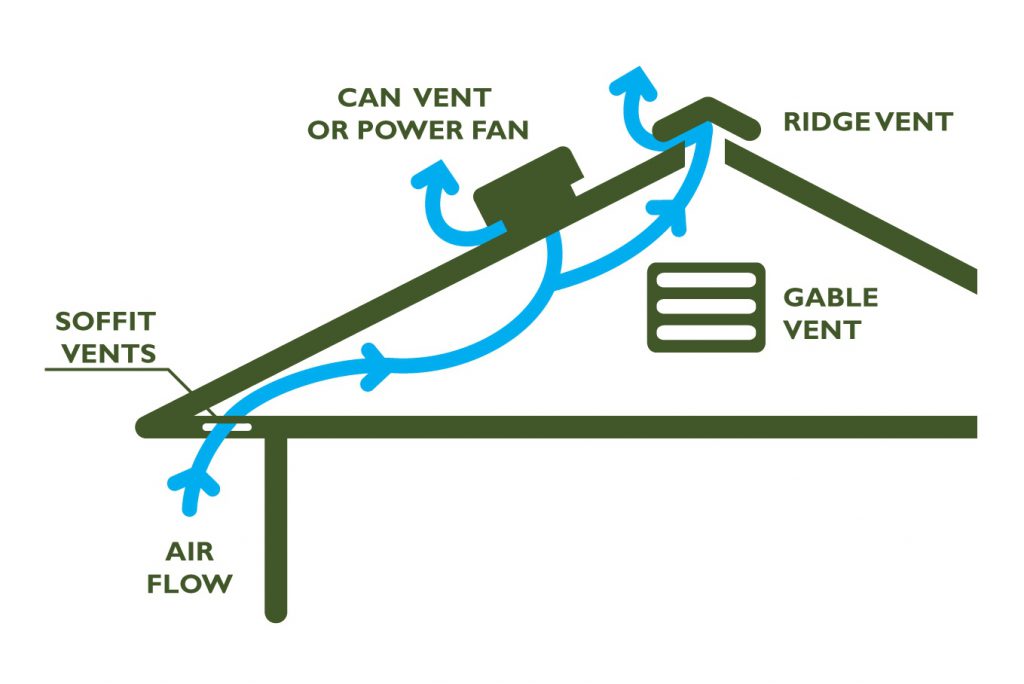Optimize Your Home with Professional Roof and Attic Ventilation Services in Bensenville, IL
Located in Bensenville, IL, RK Roofing Co. is a leader in providing top-quality attic ventilation systems and roof ventilation installation services. Our expertise in attic ventilation, roof vent installation, attic ventilation installation, and attic vent installation ensures that residents receive the best solutions to enhance their home’s efficiency and comfort. With a focus on customer satisfaction and a commitment to excellence, we offer tailored ventilation solutions designed to meet the unique needs of each home we serve.
Expert Attic Ventilation System Installation
The key to a healthy and efficient home starts with a properly functioning attic ventilation system. At RK Roofing Co., we specialize in attic ventilation installations that improve air circulation, reduce heat buildup, and prevent moisture accumulation. Our skilled technicians are experienced in identifying the best ventilation strategy for your home, ensuring a balanced airflow that extends the life of your roof and improves indoor air quality.
Professional Roof Ventilation Installation Solutions
Proper roof ventilation plays a crucial role in the overall health of your home. By offering specialized roof ventilation installation services, we help homeowners maintain optimal temperatures in their attics, preventing overheating in summer and moisture problems in winter. Our team utilizes the latest techniques and equipment for roof vent installation, guaranteeing effective solutions that enhance your home’s energy efficiency and protection against weather-related damages.
Customized Attic and Roof Vent Installation
Understanding that every home is unique, we provide customized attic and roof vent installation services tailored to the specific requirements of your property. Our approach includes a comprehensive assessment of your attic and roof structure, ensuring that the chosen ventilation system delivers optimal performance. Whether it’s new attic vent installation or upgrading existing solutions, RK Roofing Co. is dedicated to offering the best in class service and technology.
Enhance Your Home’s Comfort and Efficiency Today
If you’re looking to improve your home’s attic and roof ventilation, look no further than RK Roofing Co. in Bensenville, IL. Our team is ready to provide you with efficient, reliable solutions tailored to your needs. Call us today at (773) 447-2704 or fill out our online form to get started. With RK Roofing Co., you can rest assured that your home will benefit from enhanced comfort, efficiency, and longevity. Let us help you create a healthier living environment with our expert attic and roof ventilation services.
Roof Ventilation
Construction practices and products have changed dramatically in recent decades. Windows and doors are more airtight, insulation levels have increased and the use of house wraps and vapor retarders is commonplace. Today’s houses are more airtight and that helps save energy. But these changes have created new issues with indoor air quality and attic ventilation.
As construction has changed, code requirements have not always kept up. Heat or moisture problems can develop in the attic, even when the contractor has installed an attic ventilation system up to code. At the same time, shingle manufacturers are requiring “proper attic ventilation” to validate shingle warranties. That is why it’s never been more important for contractors to know, understand and apply all the aspects of attic ventilation.
RK Roofing as pro-active contractor always inspects and corrects (if necessary) your attic ventilation system as it directly impacts your roof performance over time.


Principles of roof/attic ventilation:
- Ventilation is a system of intake and exhaust
- Air follows the path of least resistance
- Air should enter the attic at the lowest point possible
- As the air heats up and rises it should exit at or near the ridge
- Balanced ventilation system means at least 50% of the required vent area must be intake and 50% exhaust
- Make sure intake & exhaust vents are clear of any debris
- Use insulation baffles as required to the air path
- Difference between ventilating Hip and Gable roofs
- Use of air channels for ventilating cathedral ceilings
- Preventing ice dams
- Proper ventilating of knee wall area
- Knowing which products to use for the best performance;
Ridge vent, static (mushroom) vent, power fan, gable louvers, wind turbines
We provide a verity of top brands currently available on contractors’ market to best suit your home needs:
Air Vent Inc.
Solatube

